Wheeling on Empty
The next morning my stomach was still not interested in food, but other than my recently pervasive lack of affinity for culinary experiences, we were doing great. Our conversations with our new cycling friend, who turned out not only to be American, but also a recent immigrant to Russia, had led us to believe that today was a day for revisiting our Borobudur-style of wheeling. The waypoint was a far off temple by the name of Banteay Srei. It’s true that it’s much smaller than the other Angkor temples, and that it lies another 25 km northeast of the main Angkor complex, but we had been hearing again and again that this was one of the more amazing places to visit in Cambodia. And it was only a mildly savage wheel away, which after all is what we’re here to do.
So once again we climbed onto the Speed TRs, this time wisely skipping breakfast at the otherwise positively enchanting Mandalay Inn. We wheeled into the dusty tourism-driven monstrosity which is Siem Reap. The sun was once again blasting, and the temperature was quickly rising. We needed to put something in our stomachs (whether they liked it or not) and lay into the wheel.
We finally selected a little faux French cafe which offered $3.00 breakfasts. Â This is by no means cheap, and blows the average AsiaWheeling cost-of-breakfast index by at least three times. But it seemed to us a reasonable deal, due to an interesting part of the Cambodian monetary system, which, if you will humor me dear reader, I’d like to discuss.
Namely, they use US dollars as the national currency. Now I know, dear reader, that you’ve heard of something called the Cambodian Riel, and AsiaWheeling can vouch for its existence. We’ve seen them, even used them. But when it really comes down to it, the Cambodians use good old Â¥amaguchi $pending döllÃ¥rs. The Riel and the Dollar are locked in a kind of strange kinship, in which dollars are used for most pricing and to pay most debts over a few cents. Even large Cambodian corporations, like our cellphone provider, Beeline, use the old greenback in all their printed documentation. In our experience, the Real is used essentially to replace coins. American coins are not welcome in Cambodia, and any change that requires increments below $1.00 is given out in Riel, at the rate of 1000 Riel to the quarter-dollar.
An interesting side effect of being back in a land of dollars, is that we were not able to build up a new value structure based on the price of goods in the local economy. We already had a good idea of the value of a dollar and how much was a fair price for, say, a bowl of fruit and muesli.

It was by exploiting this weakness in our own ideas of value, that the Cambodians were able to get away with charging significantly more for some items than we had been used to paying on the previous portions of the trip. All this aside, there was something comforting about the dollars in my wallet. They felt more like real money and less like Monopoly money, somehow more solid. Interesting.
Back in Cambodia, we had ordered two bowls of muesli and fruit. When they arrived we discovered that here muesli was much more expensive than fruit, making each bowl more like a giant tropical fruit salad, covered in yogurt, and sprinkled conservatively with muesli.
As we were eating, a number of landmine-related amputees came over to our table to offer goods to us or to panhandle. These fellows (all that we met, strangely enough, were men) were beginning to become a normal part of our lives here in Cambodia. Cambodia has had in the past, and continues to have (to a slightly lesser degree these days) a truly heinous problem with landmines. Cambodia was very heavily mined during past times of war and political strife. Now, as farmers attempt to turn over new land and children play, from time to time they get blown up.
We read that on our way to the Banteay Srei temple, there would be a landmine museum, where we could learn more about the situation and donate money to help remove landmines from Cambodia. This would be an important waypoint.
We forked over our $6.00, what would have been deemed a giant expenditure in Indonesia or India, and climbed onto the cycles. My stomach was still not so hot, but the food seemed to be providing me with energy, so off we went. We pedaled hard over the smooth new road to Angkor.
We decided to skip the secret herb garden entrance and made our way directly into the park through the main gate. They stopped us briefly to check our tickets, and with that we were free to ride on. We made our way quickly around the main Angkor Wat complex, heading east and north into the more far-flung regions of the park. As we made our way out of the main section, the road quality diminished slightly, though it was still quite rideable, even at full speed.
The concentration of touts and roadside stands also fell off in no time. Soon we were wheeling through a thick forest, where our solitude was only interrupted by the occasional tiny settlement (likely housing for the employees of the organization that maintained and operated the Angkor complex, an outfit by the name of APSARA).
As we rode on, the road become markedly worse, though still quite smooth by AsiaWheeling standards, and nothing the Speed TRs couldn’t handle. We passed out of the Angkor park proper, and into a more agricultural land. Here there was no more jungle; all had been turned into farmland or villages. We passed through a number of small villages, where the street was lined with stands selling everything from fresh fruit, to gasoline, to handicrafts. In one of these villages, we took a lichtenschtein and began heading slightly uphill. The Banteay Srei temple was located in the foothills of the more rocky region where much of the sandstone was harvested to build the many temples in the Angkor complex.
The condition of my stomach was strange. While I was wheeling, I felt reasonably fine, thriving on the physical exertion and the strikingly beautiful scenery, but when we stopped to drink water, I would instantly be hit with waves of nausea and exhaustion, which made it quite unpleasant to sit or stand. This, as you can imagine, dear reader, made me none too eager to stop for water breaks. Scott, however, took on the noble task of keeping us from becoming dehydrated, for we were sweating buckets. Somewhere in the sweating haze of the last few kilometers of the ride, we managed to pass right by the landmine museum.
When we finally reached the temple, I climbed off my bike, and instantly curled up on a long wooden bench in the shade of the welcome and information center. I lay there for some time letting many sour feelings wash over me and eventually fade. When I once again sat up, Scott was at my side with a can of Coca-Cola.
I am normally not one to drink sugared sodas, but this proved to be exactly what I needed, giving me an instant blood sugar boost, and being the only thing in the last day not met with animosity by my stomach.
From there we made our way into the temple. It did not take us long to realize why this had come so often recommended.
It was truly glorious, covered with more ornate carving than we had yet seen in Angkor.

Much of the temple was in very good condition, and I found myself becoming quite engrossed by the some of the smallest parts: the edge of a doorway or a bit of gutter.

Truly an incredible place.

One of the great things about Coca-Cola is that it causes a sudden spike in blood sugar. One of the not so great things is that the spike is followed by a crash. I began to crash just as we were leaving the temple through its back door. On the other side of the door, we found a musical ensemble consisting completely of land-mine victims. Each was playing a different instrument based on the degree of dexterity he or she still possessed. We sat down to listen for a while.
They were great. We were sure to put a few dollars in their tray before leaving in search of more sugared bevarages and perhaps a bathroom.
We found both in the same place. We sat down outside the bathroom, and began fishing though a large red cooler, out of which the bathroom attendant was selling beverages. After a fair bit of bargaining, Scott had a can of coffee, and I decided to roll the dice on a can of Malaysian soy milk. The soy milk seemed to be doing the trick, but I had to take my time. This was fine because the drink seller was soon joined by a woman, and they were both interested in learning more about AsiaWheeling. While we chatted with them in bits of English and plenty of pantomime, a group of British tourists came over and used the bathroom. We greeted them both on their way in and on their way out.
When I had finally finished the soy milk, I stood up to go and suddenly felt an emptiness inside of me. My Maui Jims! Where were they? I patted all my pockets and then remembered I had washed my face in the bathroom and removed them in doing so. I dashed back into the room and looked on the counter, but my glasses were gone. I came back out, quite distressed, and asked our two new friends if they knew where my Maui Jims had gone, pantomiming a pair of spectacles. They replied, indicating that the British fellows had taken them.
Bloody well then. Scott jetted toward the gate to cut the buggers off before they could escape. I sprinted back toward the temple in case they had returned that way. Chances were low that they’d been able to make a getaway already, so we still had a chance.
I removed my wallet as I ran, taking out my ticket so that I could show it to the guard without having to stop.I ran into the complex, narrowly dodging a Japanese tour group that appeared out of nowhere. Once I reached the center of the temple, I sought high ground and began to scan for the scoundrels. And then I saw them… lurking toward a less visited section.
I headed over and at first could not tell if any of them were wearing my beloved glasses. But as I grew closer, I could see that one of them was looking particularly sharp. He was a pasty chap in an Indian kurta-style shirt, wearing a pair of beautiful golden spectacles. I walked directly up to him.
“Hey, brother,” I said as I removed my glasses from his face. He stammered a bit in response. “Cheers,” I replied, and headed back toward the entrance.
I met back up with Scott and shared a brief moment of triumph. Scott munched on a few nuts, and I pondered why even with this great victory, my body was not accepting food.
Back on the cycles, we pedaled hard toward home, keeping our eyes peeled for the landmine museum. We had missed it on the way here, but managed to catch it on the way back. The entrance to the place was lined with old bomb and landmine casings. It cost us $2.00 each to get in, but was well worth it and a good investment.
The museum was started by a former Khmer Rouge child soldier, named Aki Ra, who had defected to the Vietnamese near the end of the rule of the Khmer Rouge. On the Vietnamese side, he fought hard to liberate his country from that dark time. Since then he had begun working tirelessly to defuse the many landmines that plagued his people.
The museum was, to put it lightly, intense. Most of it consisted of a number of rooms, filled with examples of land mines, large printed posters explaining the history of landmines in Cambodia, and haunting children’s drawings of people blown to bits.
The vast majority of the landmines had either Chinese or Cyrillic writing on them. This observation was corroborated by a large poster showing the word’s inventory of landmines. China had the most, followed by Russia and the US. We struggled to wrap our minds around the things we were seeing.
In many of the photos, it seemed Mr. Ra was defusing or disposing of landmines and unexploded bombs by roasting them over a flame, or actually building little bonfires out of the bombs themselves.
It’s hard to believe that this is a reliable way to dispose of such things… We ended our visit by taking in a very intense video produced by the organization, featuring a great many landmine victims. This was an important waypoint, to be sure.
We left the museum feeling very strange, very lucky… It took quite some time of wheeling and talking before we realized that we had gotten so far off topic and onto a strange existential tangent that we both must be suffering from drastically low blood sugar. We pulled over to the side of the road and drank two more Cokes. The woman who sold them to us was exceedingly friendly, and seemed to be extremely popular with the local villagers, for a few of them pulled over while riding their bicycles to chat with her during our time at her stand. She also had some fantastically distressed Coca Cola advertising materials.
We kept, wheeling, running on Coca Cola and pure will power. Â By the time we reached Siem Reap, I was beat to shreds. I was barely able to maintain common civility when we finally dismounted at a fruit smoothie stand near the Mandalay Inn. The power had been out for hours, so they had not been making smoothies, but right as we rolled up the power came back on. The owner and some of her friends who were sitting around the outside burst into applause and laughter, attributing the return of electricity to our arrival.

I was nearly unable to control myself, so intense were the waves of exhaustion and nausea. Water helped, and so did a somewhat warm (most of the ice had melted during the power outage) banana and mango smoothie. I was unable to each much of anything else that night, but we did purchase a couple of boat tickets from our hotel. Elya, the Russian-American cyclist that we had met a few days before had recommended that we take a boat to a city called Batambang. The boat would take us across the Tonle Sap and up a river. Our Great Helmsman, the Honorable Mr. David Campbell, had spoken to us during our planning meeting in Iowa, describing the floating villages of the Tonle Sap as an unmissable part of our Cambodian explorations. We were excited to get the chance to see them, and while the boat was somewhat expensive, pictures on the wall of the ticket booking agency showed it as a rather large comfortable looking vessel, featuring a bathroom.
It would be an interesting and pleasurable ride, no doubt. So I did my best to sleep plenty that night, in hopes of being able to eat the next day.



















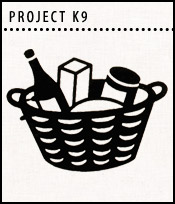
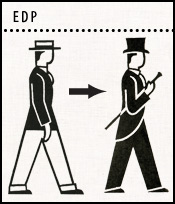
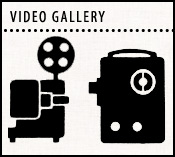
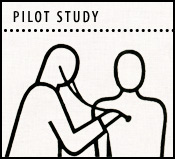
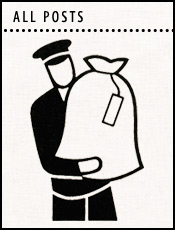
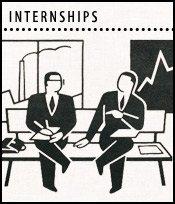




Comments
More tourist-oriented than usual, but well justified. Hard to imagine a trip to the landmine museum could help a queasy stomach.
كنت اود ان اقرأ تقرير بمثل هذا السرد المصور الراقي والمعلومات المهمة … شكرا